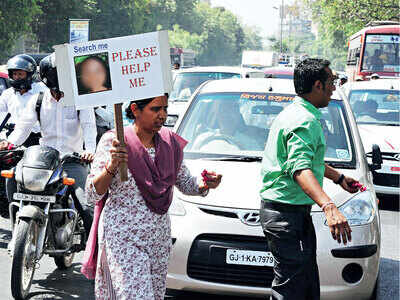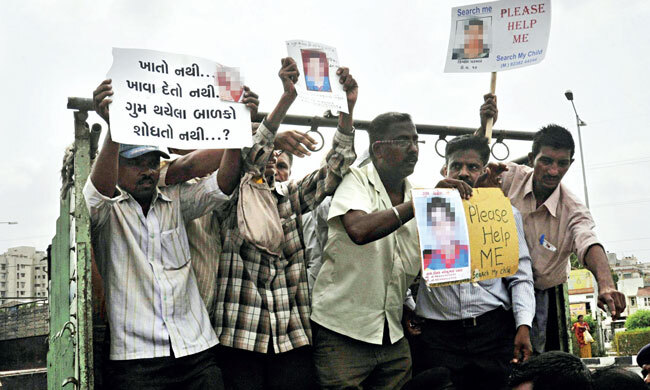Talash for missing kids goes hi-tech

FILE PHOTO: Talash aims to consolidate data of all missing persons at one central database in Gandhinagar
ven as DGP Ashish
On the DGP’s order, the
Giving a boost to their search, Gujarat Police is developing a first-of-its-kind android application that will include a central database of missing persons with facial recognition and identification software to aid in the search of missing and trafficked children.
‘Talash’, as the system is named, will be a twofold system that will act as a mobile database of persons reported missing as well as have a facial recognition and reconstruction system that will be able to match the faces of rescued children with their old photos using facial features through
In the making for about one-and-a-half years now, officials said the system aims to consolidate data of all missing persons in one central database in

ID has already located 93 of the 2,617 missing children between August 6 and 14
The system has been developed by a technical team in the Missing Children Division of the CID in Gandhinagar with civilian technical advisors in cooperation with the CID’s own Cybercrime Cell, which itself recently underwent a technological overhaul. The project was headed by SP Rajesh Gadhiya of CID Crime, who was recently transferred to Ahmedabad as DCP of Zone-IV.
Currently, the CID is compiling the statewide database of missing persons to upload on the system. ADGP Anil Pratham, who heads the Women and Child Cell at CID, said, “We have already uploaded missing persons’ data from 34 of 40 police zones across Gujarat and the rest of the work should be completed shortly.”
“There are still a lot of missing children in Gujarat, many of who are also teenagers who have left home. Our continuous endeavour is to find the little children and also bring back the others who have left home and try to reconcile them with their families. We are greatly aided in this task by our FFWC members and now, with the Talash system almost ready, it will be a great force multiplier in fast-tracking the search for missing children,” DGP Ashish Bhatia said.
How Talash works
When
This means that if a child lost at age 8, is found at age 15, the app can successfully gauge the same and provide potential results.
Senior officials confirmed that primary tests in February 2020 of image matches were completed successfully. Giving an example of this, Gadhiya told Mirror, “We uploaded in our database a photograph of an 18-year-old girl and then searched using the current photo of the same girl who is now 36 years old. We got a match. Several such tests were conducted with satisfactory results.”
A match of 50 per cent and above will sound an alert not only to district police but also the control room in Gandhinagar, after which, further investigation will take place.
Old tech and social class are obstacles to new method
Officers said that some children are not found for years, in some cases, because of the lack of good photographs, especially because they come from poor backgrounds.
Many times the quality of the photos is bad and there would be few of them for the police to work with, as many lost children are from poor families. As the database nears completion, the problem remains that the system often refuses to accept such entries.
The solution is for the police to seek multiple photos of missing persons from different angles so that a better match can be made in case they are found.
Police officials are also set to be instructed to click better photos of children they find wandering or trafficked, so that they can be identified at a later date if their families are not located immediately.
Who will be given access?
The system will be further turned into a mobile application, giving access to police personnel and volunteers of
Superintendents and wardens of different Child Care Institutions (CCIs) will also be given access to the programme apart from police officials and FFWC volunteers.
GALLERIES View more photos






































Recent Messages ()
Please rate before posting your Review
SIGN IN WITH
Refrain from posting comments that are obscene, defamatory or inflammatory, and do not indulge in personal attacks, name calling or inciting hatred against any community. Help us delete comments that do not follow these guidelines by marking them offensive. Let's work together to keep the conversation civil.